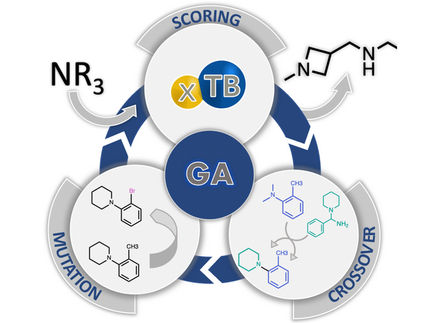Chemists synthesize an improved building block for medicines
Chemists overcome a major hurdle in synthesizing a more stable form of heterocycle—a common component of most modern pharmaceuticals
Advertisement
Chemists have overcome a major hurdle in synthesizing a more stable form of heterocycle—a family of organic compounds that are a common component of most modern pharmaceuticals.
The research, which could expand the toolkit available to drug developers in improving the safety profiles of medications and reducing side effects, was published in Science by organic chemists at the University of British Columbia (UBC), the Massachusetts Institute of Technology (MIT), and the University of Michigan.
“Azetidines are a particularly useful, stable form of heterocycle, but synthesizing them has been incredibly challenging,” says Dr. Corinna Schindler, Canada Research Chair in synthetic solutions for bioactive compounds at UBC and senior author on the paper.
Heterocycles play a major role in the design of modern drug families—including cancer drugs and antibiotics. Some reviews indicate 85 per cent of all biologically active chemical entities contain a heterocycle.
But many heterocycles currently used in pharmaceutical design tend to oxidize under physiological conditions. This can lead to off-target effects and challenges with the safety profiles of medications.
Azetidines—organic compounds that contain three carbon atoms and one nitrogen atom, and are liquid at room temperature—are known to be metabolically robust and don't undergo oxidation reactions under physiological conditions.
“This is something that synthetic organic chemists have tried to achieve for a long time, and we’re hopeful this will enable researchers to develop new synthetic transformations of azetidines with more useful chemical and medical functions,” says Dr. Schindler, whose lab conducted the research at the University of Michigan with graduate student Emily Wearing and in conjunction with Dr. Heather Kulik's lab at the Massachusetts Institute of Technology.
The team used light-driven reactions and a computational approach to the problem and for the first time were able to engage compounds called imines productively in reactions to form new azetidines.
Original publication
Other news from the department science
Most read news
More news from our other portals
See the theme worlds for related content
Topic world Synthesis
Chemical synthesis is at the heart of modern chemistry and enables the targeted production of molecules with specific properties. By combining starting materials in defined reaction conditions, chemists can create a wide range of compounds, from simple molecules to complex active ingredients.

Topic world Synthesis
Chemical synthesis is at the heart of modern chemistry and enables the targeted production of molecules with specific properties. By combining starting materials in defined reaction conditions, chemists can create a wide range of compounds, from simple molecules to complex active ingredients.

























































